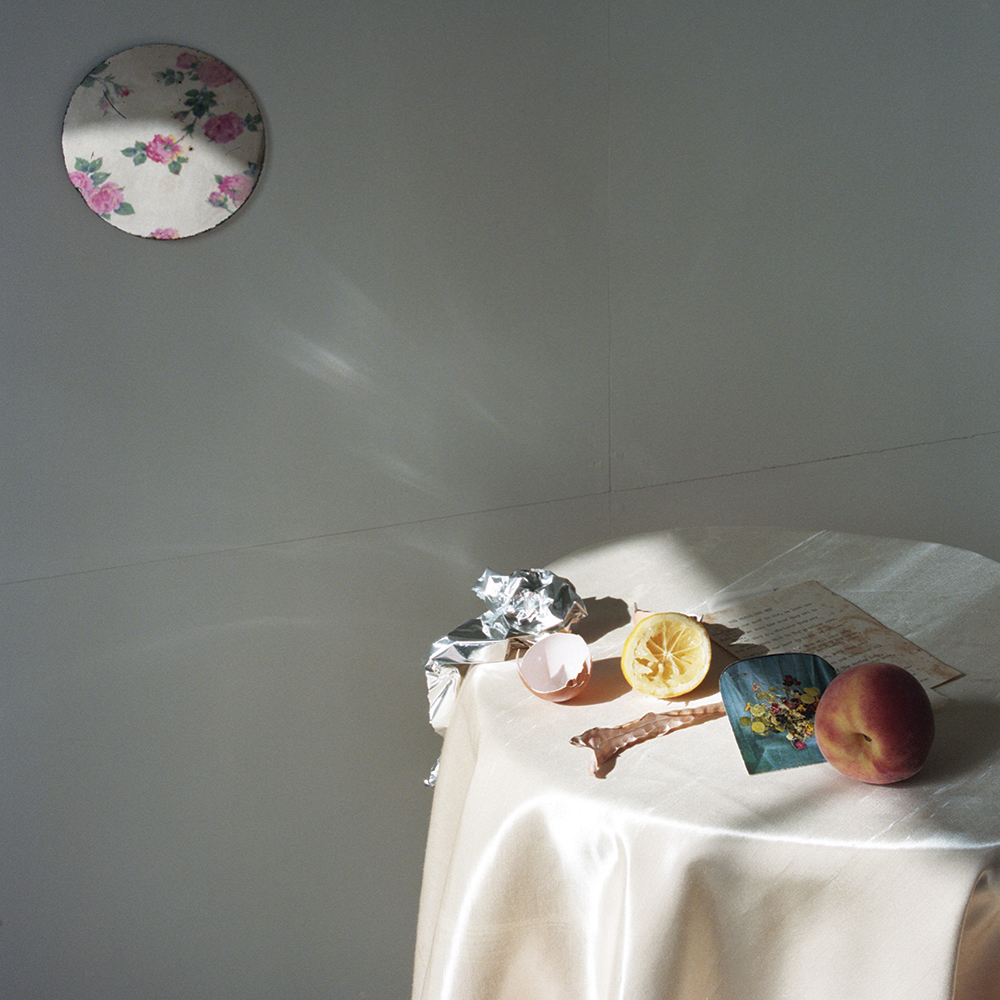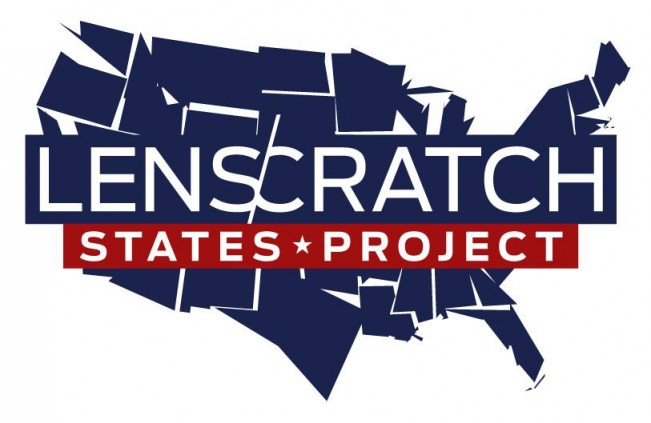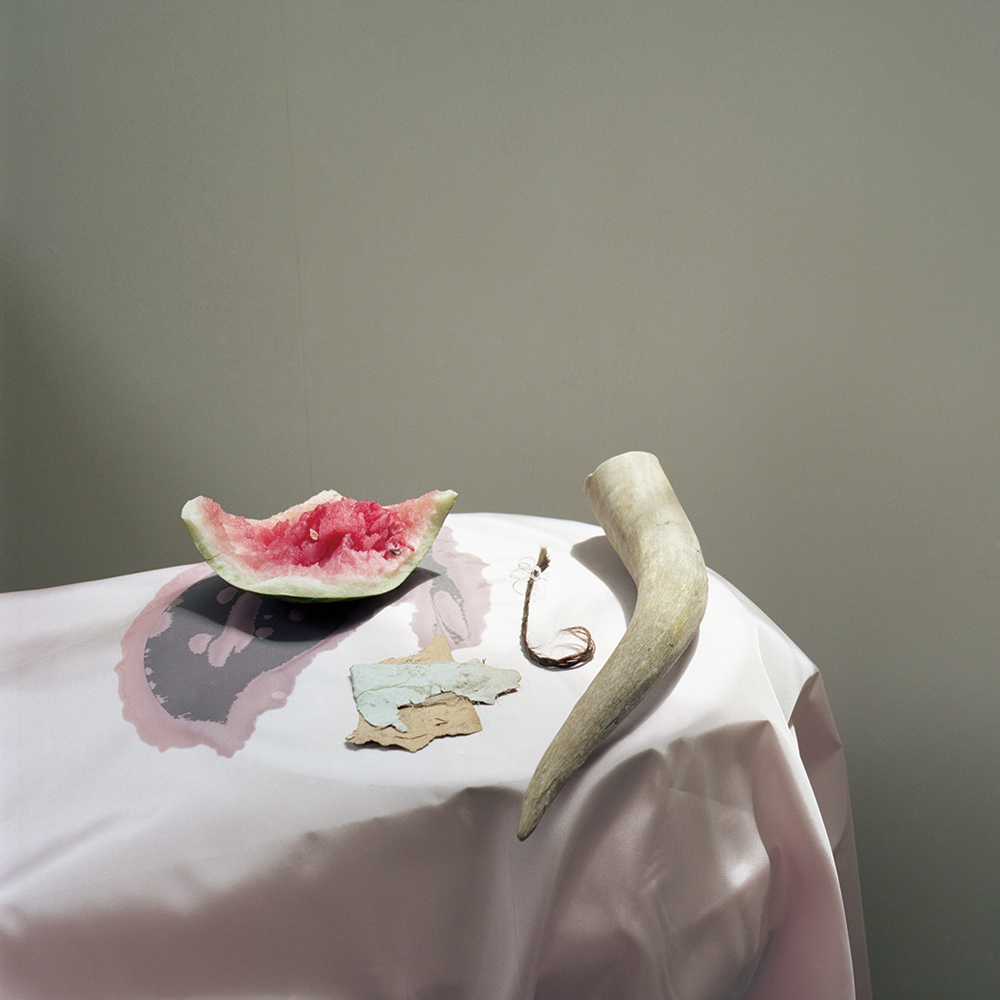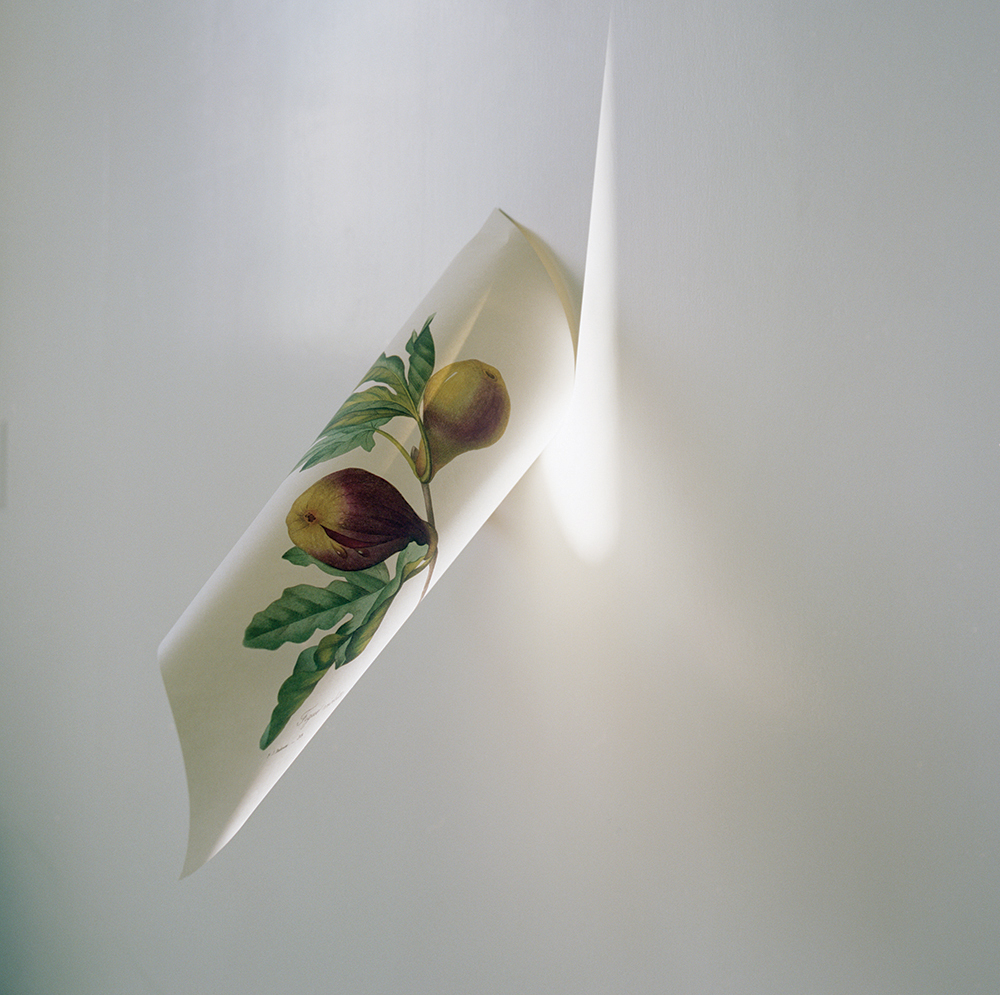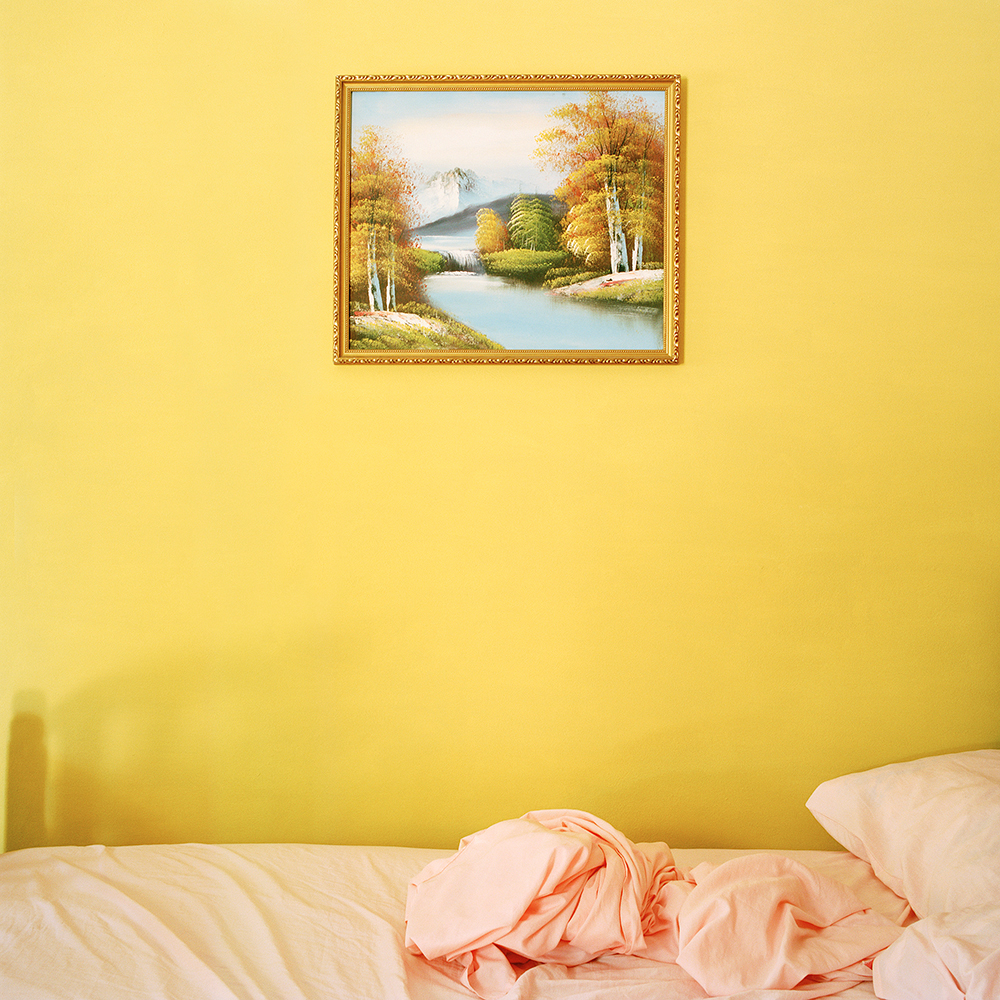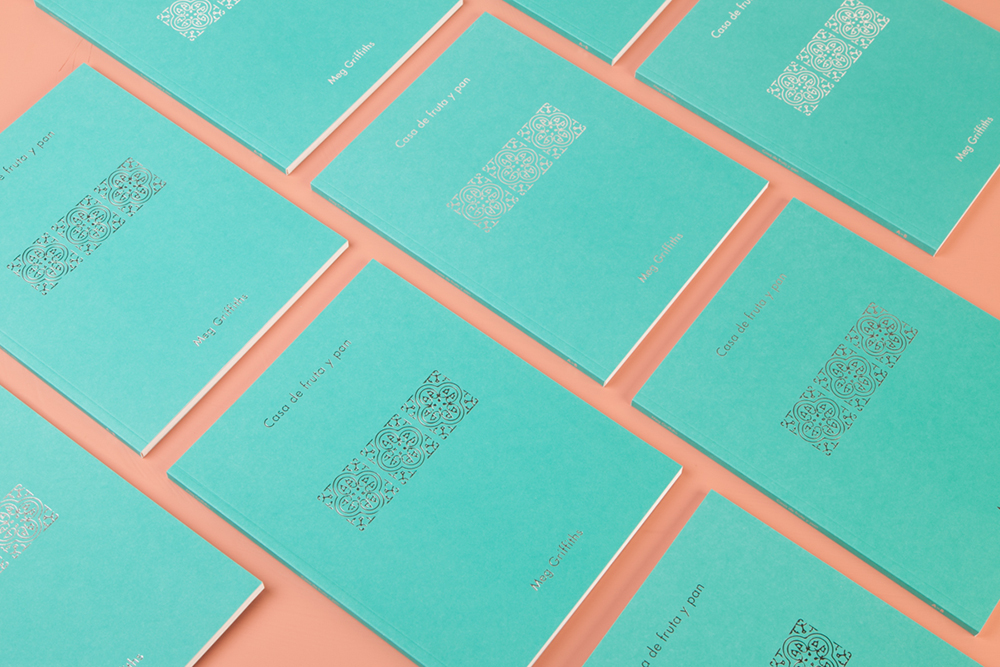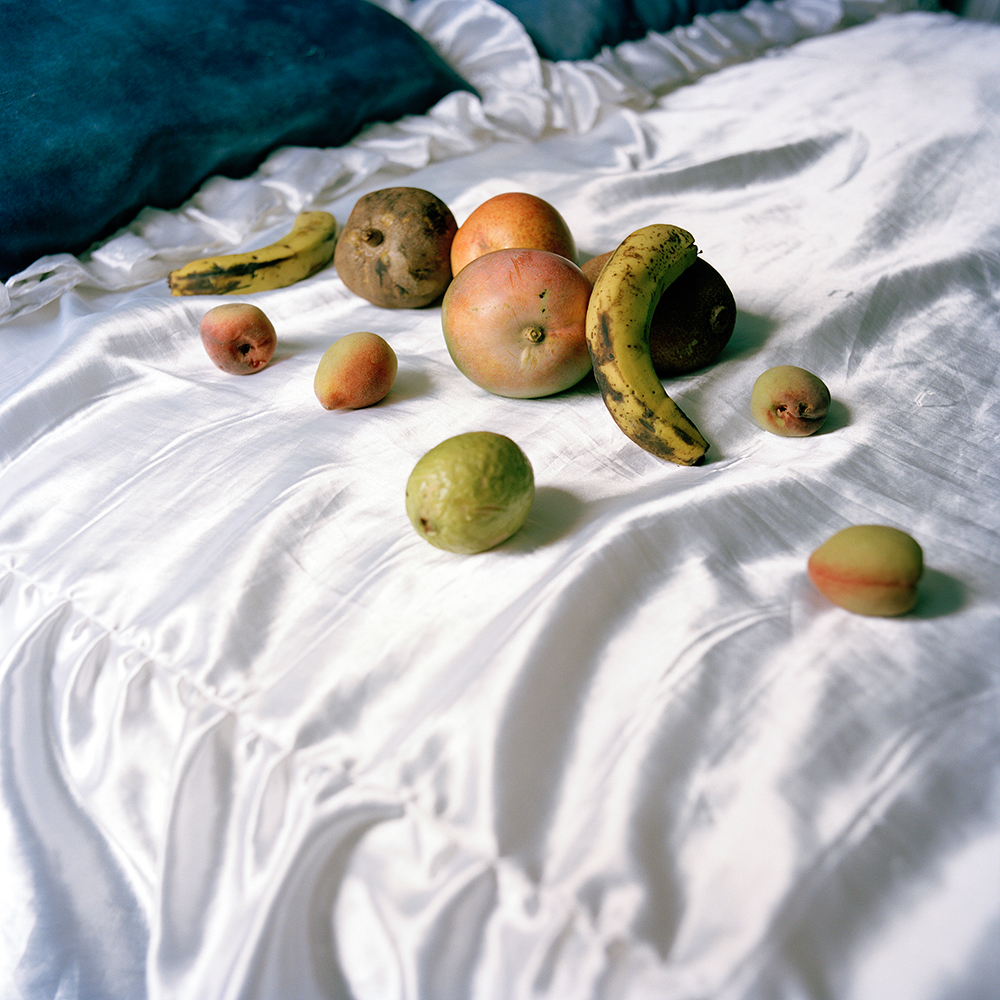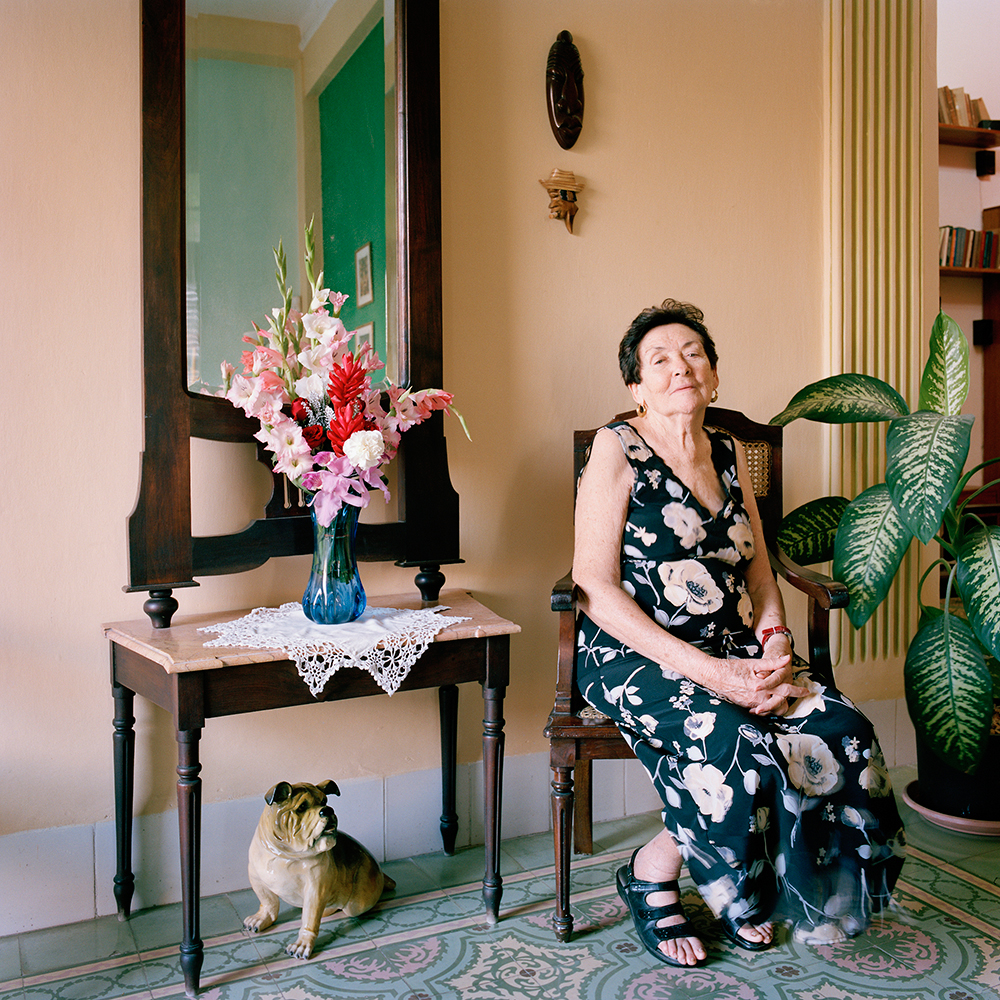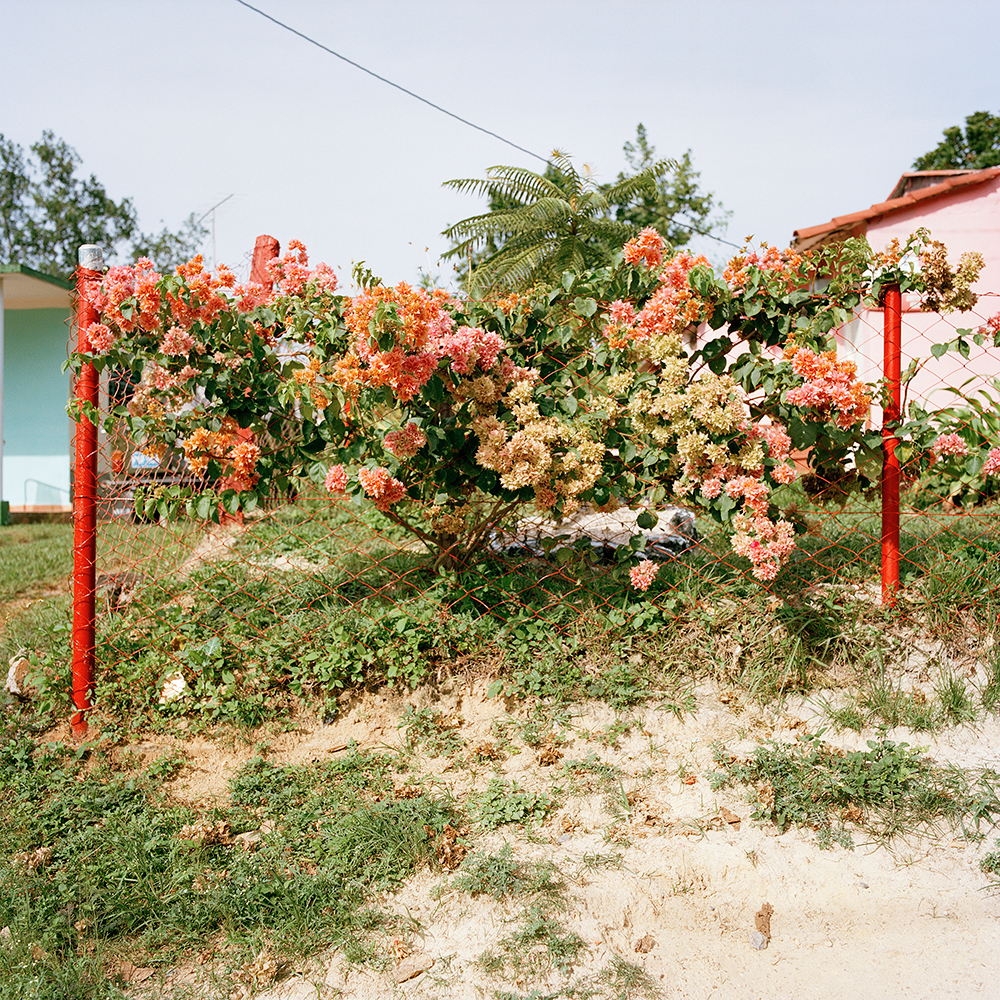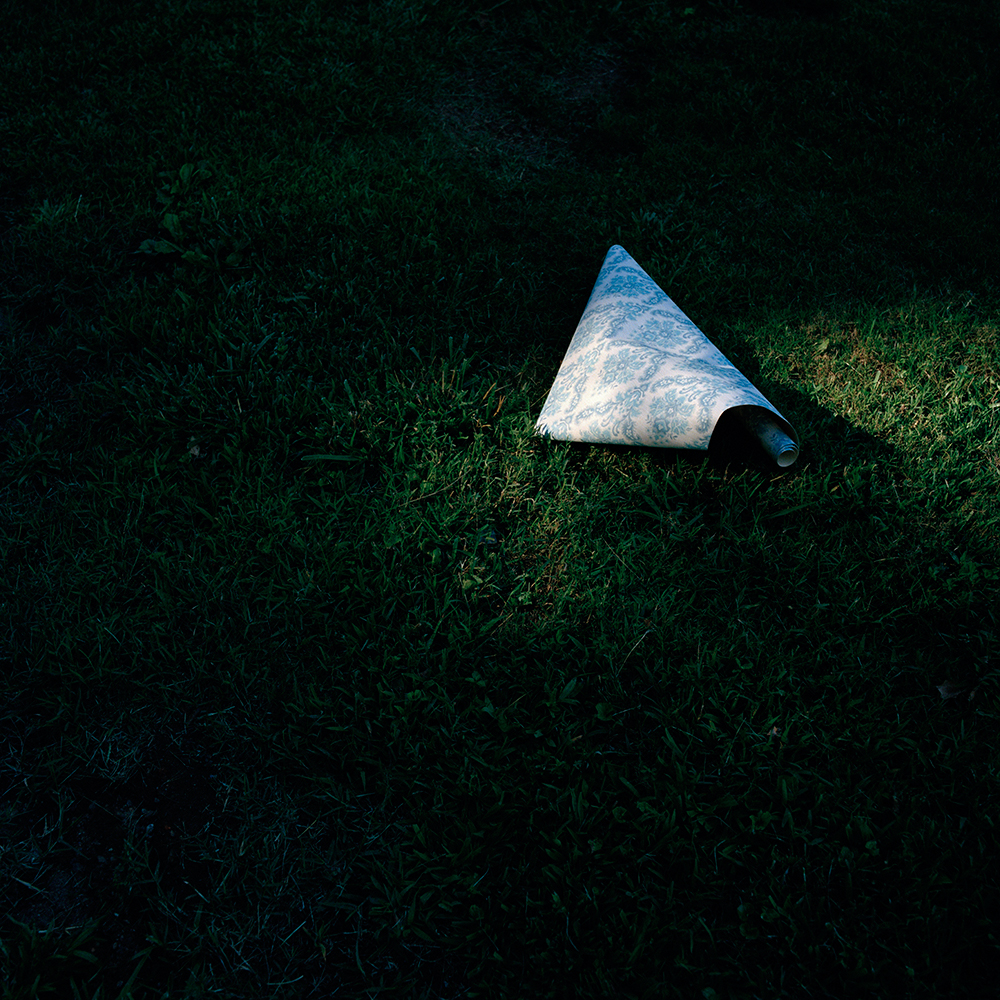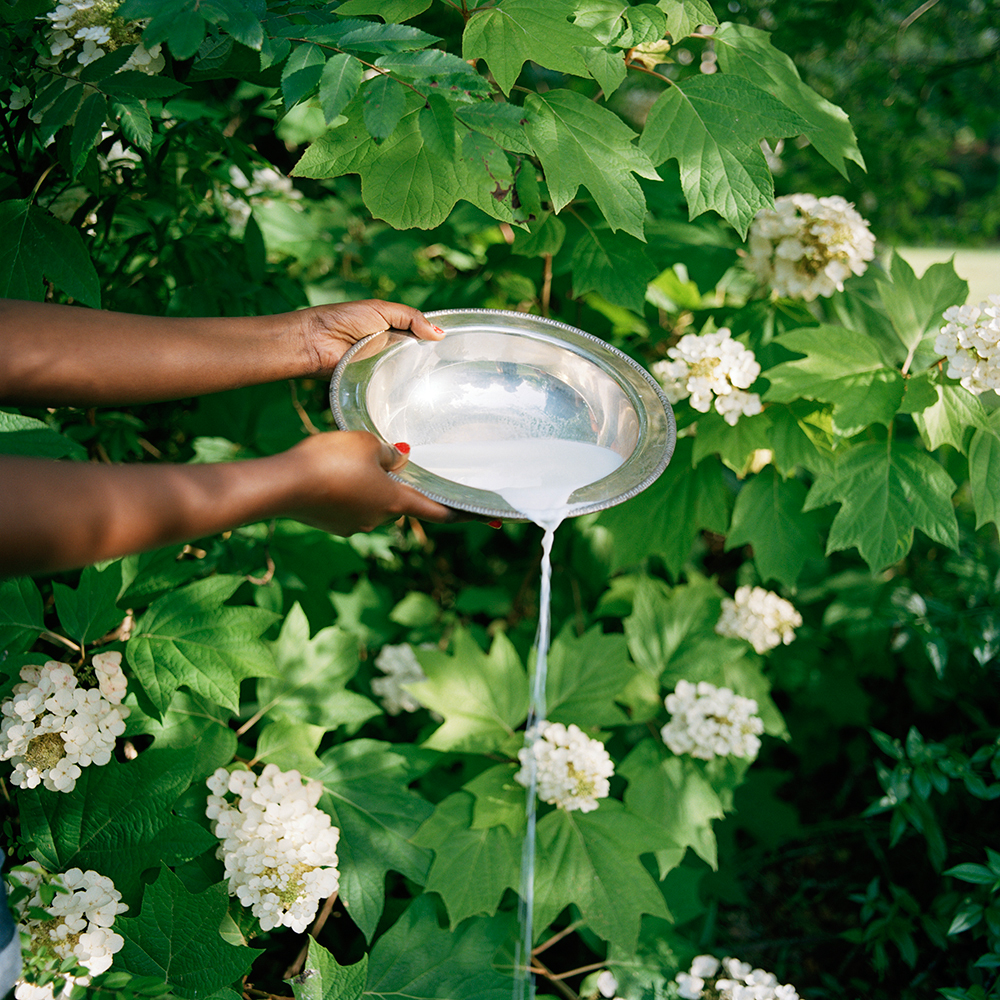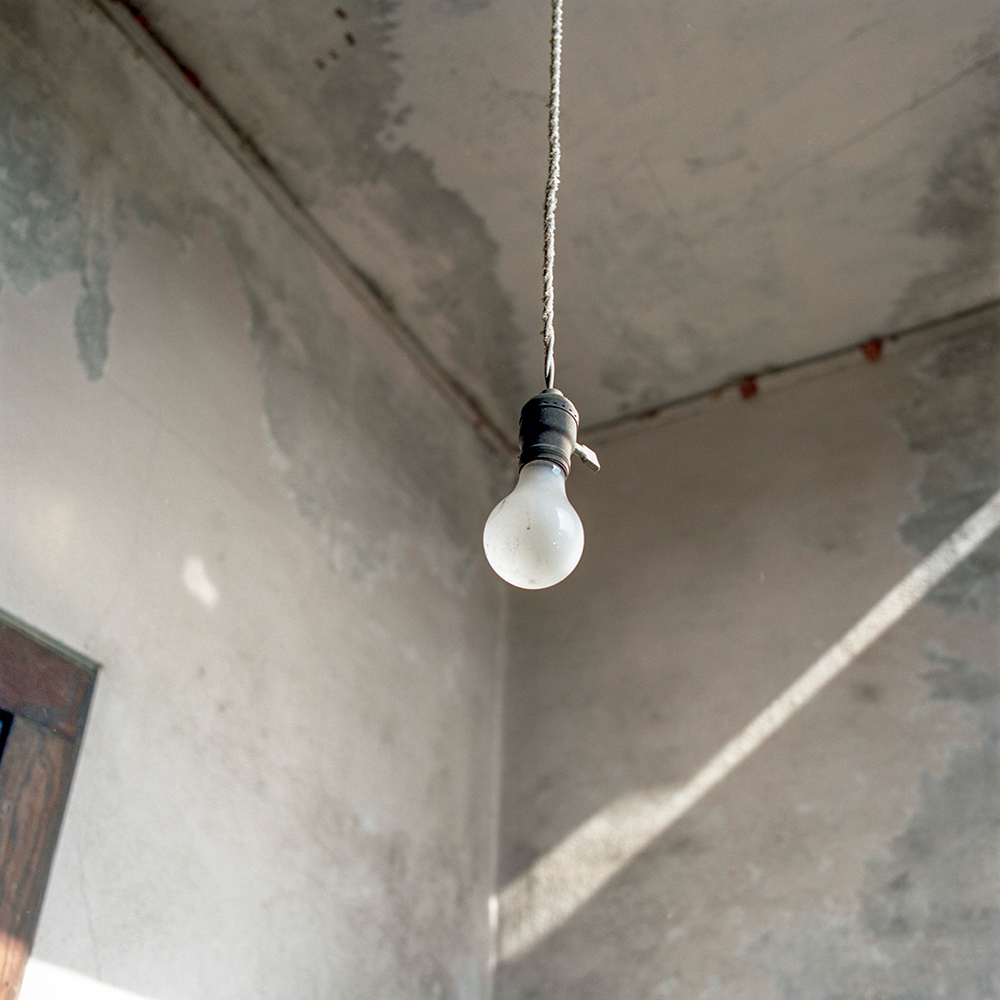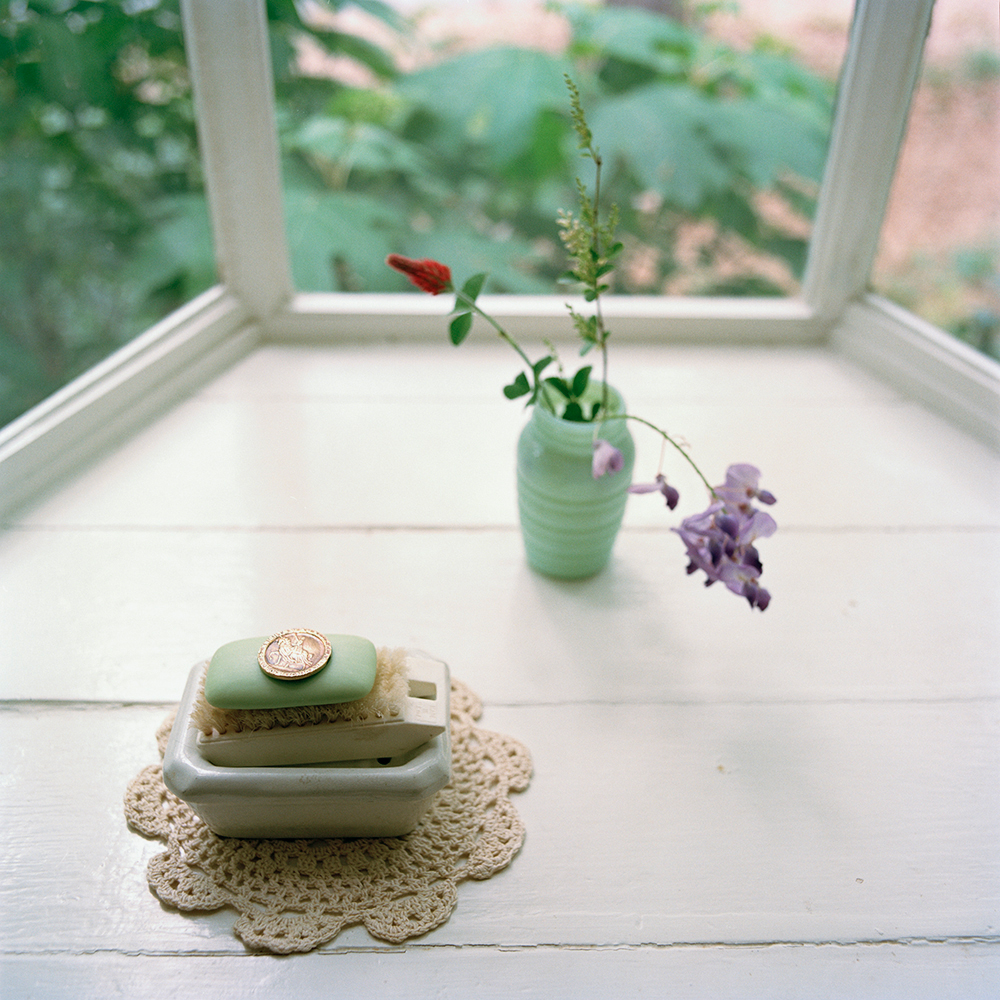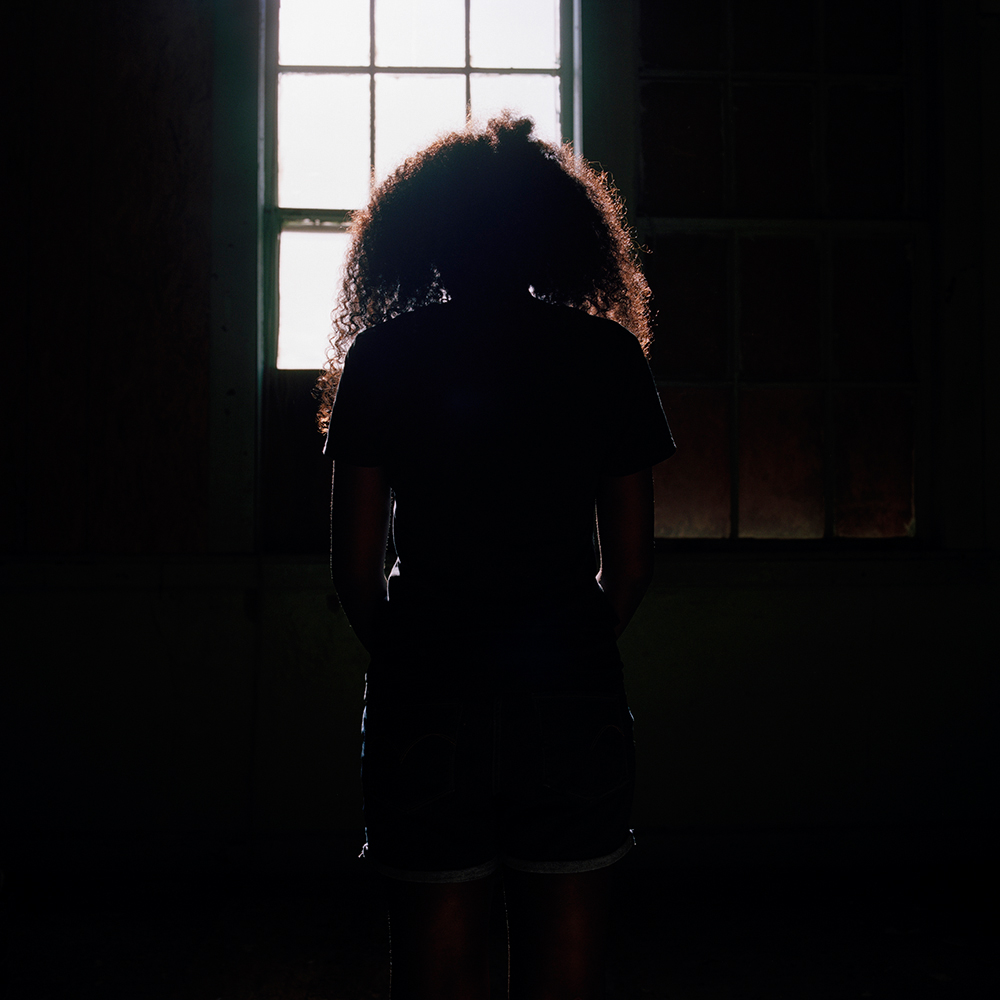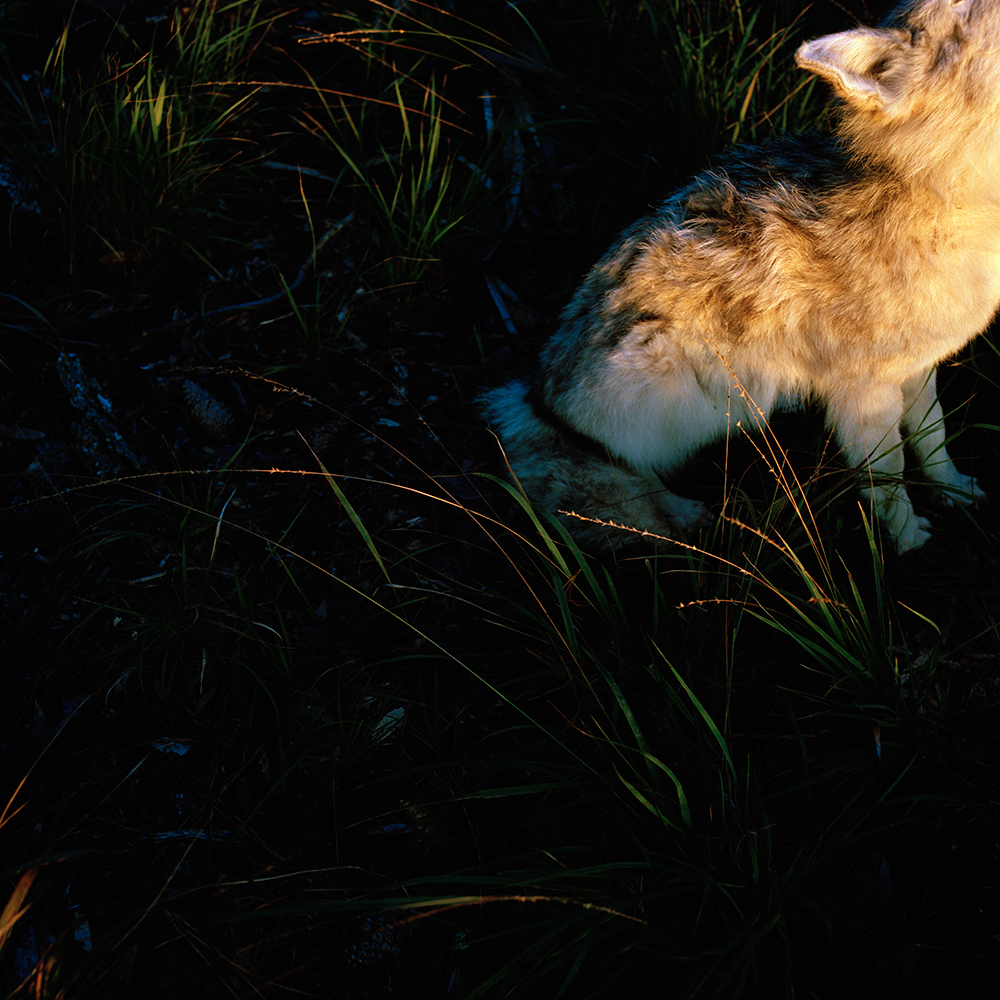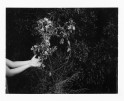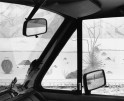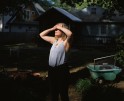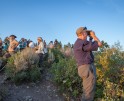Meg Griffiths: The States Project: South Carolina
When I think of the South I think of a rich history in the art of storytelling. I think about the detail and suaveness that elicits the most ordinary questions into big fish tales, with layered meanings and morals. Meg Griffiths is surely Southern to her core, and boy does she know how to illustrate her story. Bold and lush colors fill her photographs of still lifes and intimate depictions of domestic spaces, which, much like a Baroque painting, are loaded with allegory and emblem. Meg’s work evokes hearth, comfort, and a regional entanglement that feeds into tradition and history. It is with great pleasure that we introduce Meg Griffiths as this week’s guest editor for The States Project, who in turn will share work by photographers from The Palmetto State of South Carolina.
Meg Griffiths was born in Indiana and raised in Texas. She received two B.A.’s from the University of Texas in Cultural Anthropology and English Literature and earned her Master of Fine Arts in Photography from Savannah College of Art and Design. Currently she makes photographs dealing with domestic, economic, historical and cultural relationships across the Southern United States and Cuba.
Her work has been shown internationally, including: Pingyao International Festival of Photography, Chiang Mai Photo Festival, at venues such as Columbia Museum of Art, Center for Fine Art Photography, Museum of Living Artists in San Diego, Griffin Museum in Boston, Houston Center for Photography, Candela Gallery in Richmond. She has also been published in Fisheye, Oxford American, Boston Globe, Photo District News. She published a selection of work as Casa de fruta y pan with Aint Bad Publishing in 2015. Her work is a part of many private collections as well as the Capitol One Collection, Museum of Fine Arts, Houston, the Center for Fine Art Photography, and Middle Tennessee University.
She was recently honored with the 2017 Julia Margaret Cameron Award for best series in fine art photography, selected as one of Atlanta Celebrates Photography’s Ones to Watch, and named PDN 30’s: New and Emerging Photographers.
Describe what it was like to be a photographer based in South Carolina.
When I was in graduate school I used to drive across the Savannah River to go into South Carolina to make pictures. I always felt like I was escaping and that I could breathe as soon as I got across the border. I couldn’t seem to be where I was, it felt too heavy for me to hold. I always wanted to be somewhere else. Over time that changed and I grew to embrace and love Savannah, but I will never forget my mad dash after class—I’d just hop in the car, turn up the music, and drive, with no particular destination in mind. I traveled through back roads of South Carolina until the sun went down and I’d end up back in Georgia. It took me three years, but I finally moved to South Carolina to take a Lecture position at USC.
I came into my own as an artist and an educator in Columbia thanks to the support of the blossoming arts community and some fabulous colleagues. I know I wouldn’t be the artist that I am today with out that help. But more importantly I would not be the artist I am today without South Carolina. I am so thankful for all of it.
How long have you been in the South? You were in Columbia, South Carolina then Virginia, what drew you to these places?
Oh my, I have been in the South for almost a decade now. Sometimes I can hardly believe it. Although I suppose you could say I have been in the South all my life, but that is only if you included Texas as a part of this very complex region.
I have very strong feelings that Texas is not really the South as I have come to feel it—I think anyone who travels or moves from different regions of the country to the South understands this. It struck me first when I drove from Texas to graduate school in Savannah. There was a heaviness that set upon me. It could have been the thick muggy air or the fact that it was August, but I sensed it more like the weight of history unfolding layer by layer. There is a spine to the South—it is proud, romantic, and sugary sweet—but man does it carry some serious thorns. It’s complicated and stunning. It’s like the best book you’ll ever read.
I was initially drawn to the South by a desire to flesh out my passion for photography and it has kept me through my vocation. I was a Lecturer at the University of South Carolina for four years then I received a one year Visiting Assistant Position at Washington and Lee University in Lexington, Virginia. Each region, each state, really has its own flavor. Lexington is truly one of the most beautiful places I have ever lived. It is smack in the middle of the Allegheny and the Blue Ridge Mountains, right on the Maury River, has the perfect temperature all year round, and has the best little cocktail bar called TAPS. I feel really fortunate to have been there for a year.
Still there are political, social as well as economic realities that each place shares. I was fortunate enough to be in both states for historical events leaning toward progression. I was at the event in Columbia when they took the confederate flag down from the State Capitol grounds as well as participated in the first ever MLK day march to be held in Lexington. Every place I have ever lived has work to do and changes to make for the better of all. I like being witness to history in the making and taking part in that change. And really, I mean how amazing is it to say you are a part of history!
You have been making some interesting still lifes recently–previewing some raw shots on your Instagram, and now giving us a sneak peak at some of the final productions. What is this new work about?
I am a Texan. I was raised in Houston, went to school in Austin and lived there for ten years before moving to Savannah to get my MFA in photography. In all my time going away and coming back, I never found myself drawn to make pictures of this place that I love, my home state. It is hard to pin down in a photograph the fullness of how you feel about something that runs through your blood or a history you claim as your own—in all its perfection and struggle.
A commission to make work for a theater in Washington County, Texas brought me here to explore my roots, the region and its history—both as insider and outsider. I am not from this specific place in Texas, but I was raised just down the road. I am of this place. Which honestly seems to be the line I love to dance around in most of my work. Usually, I am not from the places I choose to photograph, but I find what it means to be there in that moment in my life.
For this project I have become the gatherer. Instead of going out and making work with people in spaces that are found or homes that are not mine, I would collect, research, stories, experiences, and objects and bring them all to come and mingle together in the studio. It has been a really surprising and meaningful process.
Home, family, place, all of these themes tie into your work in such a beautiful and sentimental way. Today we are featuring work from Cuba, Georgia, and Texas. Do you believe there are cultural and regional influences seeping into your photographs?
You carry everything with you. I have often heard that you need go no further than your own backyard to make images. I know this to be true, but what I also know is that you carry your backyard with you—if we can use a backyard here as a metaphor for your baggage and life experience that is.
So in keeping with this thought, when I am in Cuba cooking with families, picking fruit in the garden, making photographs of these experiences, I liken this to what I did and how I felt with my own grandmother when she was alive. When I travel down to Georgia, visit with folks and talk of how we’ve come to this point in history or the way things were raising kids in the deep South—even though we don’t share the same specific history or reality it resonates with mine. Photographs create something shared. Wherever I am and however a photograph comes to fruition—it is all of me. It took everything else in my life up to this point for me to make the photographs I make today—regions, cultures, all of it. Each place is influenced by the last. Each picture makes the next. There is some of the flavor of my Cuba work in these Texas images I am making right now! Everything seeps into everything.
Casa Particular–one of the bodies of work featured today–has been completed for a while now, has been published as a book, and just recently won the Julia Margaret Cameron Award for Best Fine Art Series, with an accompanying show in Spain and an upcoming solo exhibition at the SRO Gallery at Texas Tech University. What is it like to watch a body of work take off and further develop itself after all is said and done?
It is gratifying to see something you make and love, have legs beyond what you could have hoped for; I am humbled by that.
When you make something, as soon as you put it out there it takes on a new life. The hope is that it changes and reveals itself in new ways to new people over time and through different venues, pairings, formats or perspectives. The process of editing and sequencing this book changed the way I think about that work entirely. It was transformative for me—there was a new narrative the images took on as a result of this format and presentation—there was power to the work I had not seen before. That experience moved me. It has been delightful to see how it continues to be received, especially now that it’s starting to travel internationally.
It also cannot go without mentioning how honored I am to share that award with two brilliant and talented women, Susan Kae Grant and Amy Friend. To be in the company of these ladies has been a “pinch-me” kind of moment considering how much I admire their artistry.
You mentioned that the type of work you make begins to all blend together, Cuba finding its way into the Texas work and so on. After developing Casa Particular and learning from that experience, how do you think it has affected the work you have made since? How has it exactly informed your practice?
Well I wouldn’t say that it all blends together, more like everything affects everything. With each new project there is evolution. I see the work I am doing now a direct descendent of my Cuba work and the Georgia work as well. One thing leads me into the next.
I was initially making work in the familiar space of my grandmother’s home—transitioning from making work there to the houses I lived in while traveling across Cuba seemed a natural progression. I approached the work with the same reverence and in the same documentary style. “Bounty” from the Casa Particular series is an image I made in Trinidad one of my last few days on the island. I had been traveling across the country and fruit was literally falling off the vines—it was May and everything was ripe and in bloom. Before I left the previous house in Cienfuegos, I was given a shirt full of fruit to bring with me on my journey to the next place. I held that colorful bundle cradled in my shirt sitting shot gun in an old Russian LADA all the way there. I spilled it out onto my bed and of course I new this was a photo. It was a document of something that had taken place and a way to denote a certain time of year, but most importantly it was a symbol of how generous everyone was. And for me the fruit became a metaphor. These families had very fruitful lives based on this chosen means of making money by opening their homes to travelers. There was abundance. This is not how we typically view Cuba. The bedspread was silk and velvet—which feels so luscious and opulent. Again, not how we think of Cuba. The moment of growth came for me in the processes of moving those bits of fruit around. I wanted to make a mark, change things, say something, to infuse myself in this image based on my feelings about my experience with these families. It was a small thing I noticed then and it affected how I made work after.
When I began my work in Georgia all I wanted to do was collect things, meet folks, gather stories and create images based on those experiences. I would go out to local antique stores, mine through objects, put them in my car, drive around, make connections and then make photos. Those images are a meeting of the minds, they reflect experiences we share or a conversation we had, in some objects are used to express this and many of those objects have had past lives. “In standing” shows us a coin placed on top a bar of green Palmolive which was a minted token given to members of good standing that belong to the Klan in the South—imagine where that coin has been, whose hands have come to touch it and what it has seen. Things have weight and objects are alive—sometimes they have stories all their own and I am interested in how those stories compound when I place them with other things.
Texas is just an extension of this process of making—instead of photographing images out in the world or in a person’s home I bring it all back to an empty space like a blank canvas. I do my historical research, gather stories from people, feel through my own cherished connection to my state, and excavate this area for things that have presence—from there I create new meaning simply by placing objects, color and light together in a square frame.
At risk of sounding too caught up on the technical side of photography, I want to talk about your use of film versus digital. From a vernacular standpoint this medium specific decision makes sense to me. For instance, the light blues and the peaches that are captured are exactly how I associate them in the context of object era, region, and even nostalgia.
Agreed! I know that we do not naturally see in a square, we actually see the world more in the format of a digital camera, but I know for now with the subject matter that I am choosing to photograph—I just want to be closer. There is less space, less horizon, less room to get distracted. I want to focus, to pull something toward the viewer—to say here, pay attention to this, its important to me. I think this is exactly what we are all so fascinated by in terms of vernacular photography—people were photographing the quotidian as much as they were photographing what was important, celebrated, cherished, or just humorous. It’s refreshing, and damn were some of them seriously good photographers!
I love that color connects us to the past, creates associations, and for that matter can reinforce or break those. Color theory and color psychology are seriously fascinating to me. I think about this a lot in my work and even as I look back through previous projects. What I was thinking then, how things have changed for me over time, what can I uncover now. For example, I recently realized that I am not only churning over certain ideas in my work as I move onto the next series but I am also mulling over the same colors! I mean what draws people to certain colors? I went to a section of an antique store a few weeks ago here in Brenham to pick out fabric for my backdrop and what color did I choose–the blue of my grandmother’s home in Albuquerque, New Mexico. I just feel we choose things for a reason as much as they choose us.
Tell us more about this commission for the theater in Brenham, Texas?
Eight photographers were chosen by a fabulous English bloke named Andy Bogle—a local producer, play write and board member of the Unity Theater—to make work about Washington County, Texas for a book project conceived as a fundraiser for the theater. We were given the artistic freedom to do anything we’d like as long as it was specific to this area. There is just so much history that stems from this region. It is the birthplace of the Republic, the region where delegates met secretly at the Convention of 1836 in order to sign the Texas Declaration of Independence at Washington on the Brazos. It was the history of this place and my connection to that which inspired me to make still life images here in a studio with locally sourced objects, goods, and vegetation.
Finally, describe your perfect day.
I’m living my perfect day, everyday, for what it is right now. I wake up every morning to my son, who just turned one, and who’s taken to greeting me with his new favorite word “Wow.” My partner Jeff and I make breakfast tacos together. I head into the studio, making the short twenty-five foot walk from the house with my cup of coffee, along a gorgeous path fenced by local antique roses. I move around and play with objects and things locally picked until the light has moved far past the windows. I drive along winding Farm Roads, finding gems here and there, this week a vulture wing. At naptime I scan and edit photos. We go for a long walk around the grounds, pick wildflowers and watch armadillos and bunnies hop and root around. We blow bubbles and watch them pass through the wire fence floating toward the prairie grass that stretches across the hills to the horizon. The sun starts to bow its head toward the curve of the earth and it is time to eat. We’ll pull blooming squash blossoms off the vine stuff them with goat cheese, corn, poblano and serrano peppers, fry them up and eat dinner as we watch the last bit of sun disappear over the foothills. These are my perfect days here, right now, and I am just grateful that I am fortunate enough to have them.
Posts on Lenscratch may not be reproduced without the permission of the Lenscratch staff and the photographer.
Recommended
-
Jen Ervin: The States Project: South CarolinaJuly 22nd, 2017
-
Michelle Van Parys: The States Project: South CarolinaJuly 21st, 2017
-
John Lusk Hathaway: The States Project: South CarolinaJuly 20th, 2017
-
Ashley Kauschinger: The States Project: South CarolinaJuly 19th, 2017
-
Tracy Fish: The States Project: South CarolinaJuly 18th, 2017

